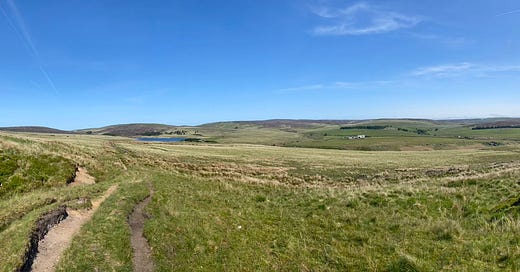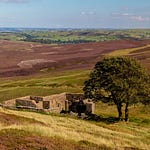In this episode of Calderdale Inside Out we talk peat, flooding, and explore an alternative solution for windfarm development.
Walshaw Moor isn’t just any landscape. It’s part sponge, part carbon vault, part natural defence system. And it’s the proposed site of England’s largest onshore wind farm.
“If you destroy that Sphagnum carpet, you are left with bare peat. There’s nothing to stop the water just flowing straight off.”
— Mr Richard Lindsay
In this wide-ranging interview, Mr Lindsay — one of the world’s leading peatland ecologists — lays out the risks of building turbines on deep peat. And it’s not just about the carbon loss (although that’s a big one). It’s about what happens downhill.
From bog slides in Ireland to long-term shrinkage and cracking, he explains why disturbing peat doesn’t just harm the land — it may increase flood risk for communities in the Calder Valley.
Richard Lindsay’s conclusion? This isn't just a bad idea. It’s a long-term gamble.
We also touch on the economics. The bit the wind industry doesn’t always advertise.
Build turbines in windy places.
Plug them into a grid that can’t take the power.
Then get paid to switch them off.
That’s called a constraint payment — and last year, the UK taxpayers spent close to £2 billion making them.
COMING SOON
We step behind the scenes of one of Calderdale’s most controversial parking schemes, and examine a cache of internal emails.
In late 2024, Calderdale Council said it was listening.
A consultation was held. The public responded — overwhelmingly against the proposed removal of parking on a stretch of road just outside Hebden Bridge. Then something strange happened.
The results weren’t shared.
A public meeting cancelled.
And council officers stopped replying to residents.
Internal emails obtained through Freedom of Information reveal:
A council officer saying she was instructed not to engage with the public
A councillor describing a public meeting as a “shouting shop”
An internal document justifying a cycle lane with no local evidence
And yet, the plan rolled on.
This isn’t just a story about parking. It’s a story about how decisions get made — and how consultation can appear to become a performance.
Coming soon: The Fallingroyd Files — where we explore the intersection of local democracy, political influence, and public trust.
We begin with a stretch of road in Hebden Bridge. But the questions raised go much further.







Share this post